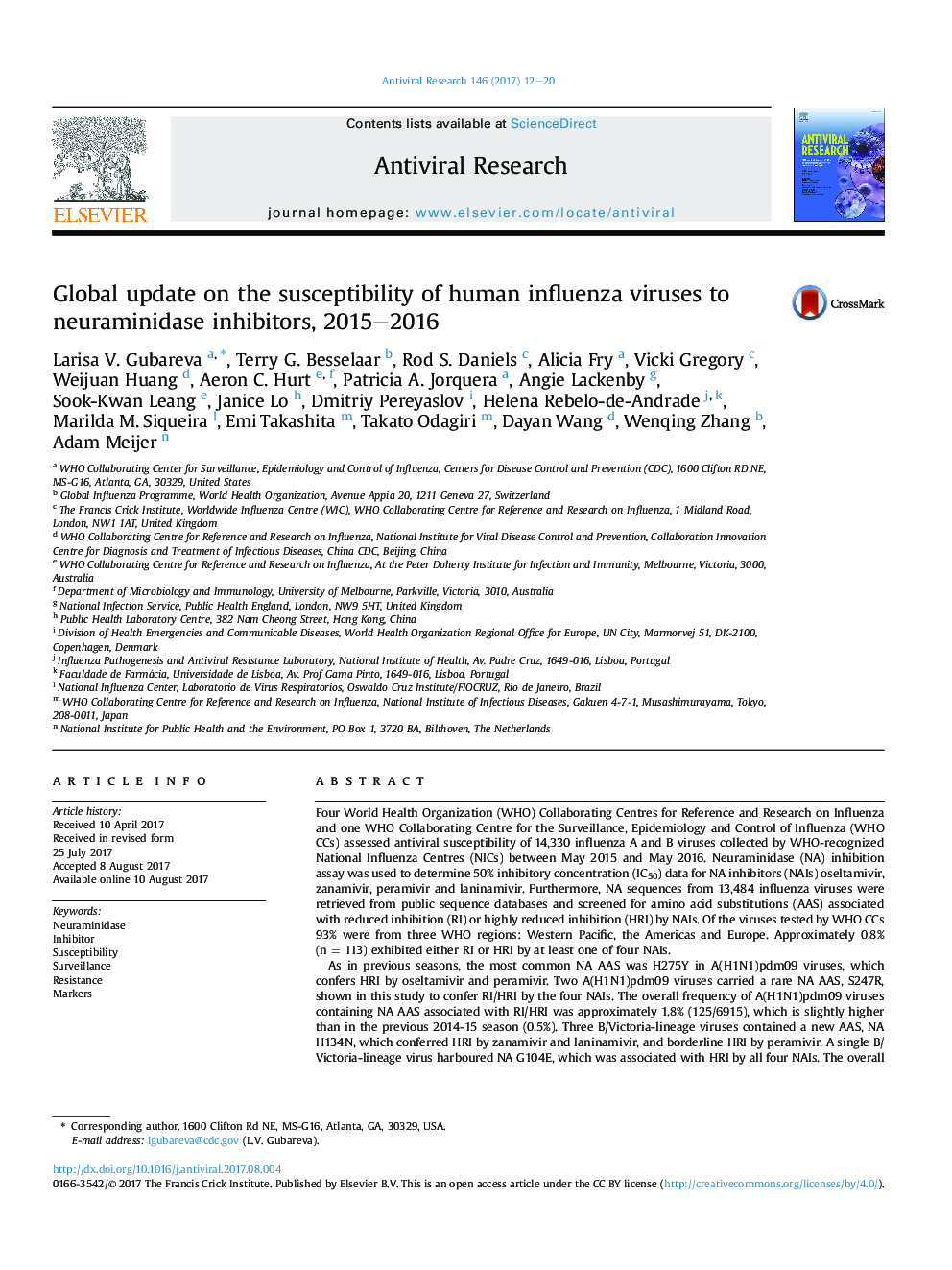| کد مقاله | کد نشریه | سال انتشار | مقاله انگلیسی | نسخه تمام متن |
|---|---|---|---|---|
| 5551668 | 1557797 | 2017 | 9 صفحه PDF | دانلود رایگان |
- A total of 14,330 influenza viruses were collected worldwide, May 2015-May 2016.
- Approximately 0.8% showed reduced inhibition by at least one NA inhibitor.
- The frequency of viruses with reduced inhibition was slightly higher than in 2014-15 (0.5%).
- NA inhibitors remain an appropriate choice for influenza treatment.
- Global surveillance of influenza antiviral susceptibility should be continued.
Four World Health Organization (WHO) Collaborating Centres for Reference and Research on Influenza and one WHO Collaborating Centre for the Surveillance, Epidemiology and Control of Influenza (WHO CCs) assessed antiviral susceptibility of 14,330 influenza A and B viruses collected by WHO-recognized National Influenza Centres (NICs) between May 2015 and May 2016. Neuraminidase (NA) inhibition assay was used to determine 50% inhibitory concentration (IC50) data for NA inhibitors (NAIs) oseltamivir, zanamivir, peramivir and laninamivir. Furthermore, NA sequences from 13,484 influenza viruses were retrieved from public sequence databases and screened for amino acid substitutions (AAS) associated with reduced inhibition (RI) or highly reduced inhibition (HRI) by NAIs. Of the viruses tested by WHO CCs 93% were from three WHO regions: Western Pacific, the Americas and Europe. Approximately 0.8% (n = 113) exhibited either RI or HRI by at least one of four NAIs.As in previous seasons, the most common NA AAS was H275Y in A(H1N1)pdm09 viruses, which confers HRI by oseltamivir and peramivir. Two A(H1N1)pdm09 viruses carried a rare NA AAS, S247R, shown in this study to confer RI/HRI by the four NAIs. The overall frequency of A(H1N1)pdm09 viruses containing NA AAS associated with RI/HRI was approximately 1.8% (125/6915), which is slightly higher than in the previous 2014-15 season (0.5%). Three B/Victoria-lineage viruses contained a new AAS, NA H134N, which conferred HRI by zanamivir and laninamivir, and borderline HRI by peramivir. A single B/Victoria-lineage virus harboured NA G104E, which was associated with HRI by all four NAIs. The overall frequency of RI/HRI phenotype among type B viruses was approximately 0.6% (43/7677), which is lower than that in the previous season.Overall, the vast majority (>99%) of the viruses tested by WHO CCs were susceptible to all four NAIs, showing normal inhibition (NI). Hence, NAIs remain the recommended antivirals for treatment of influenza virus infections. Nevertheless, our data indicate that it is prudent to continue drug susceptibility monitoring using both NAI assay and sequence analysis.
Journal: Antiviral Research - Volume 146, October 2017, Pages 12-20
